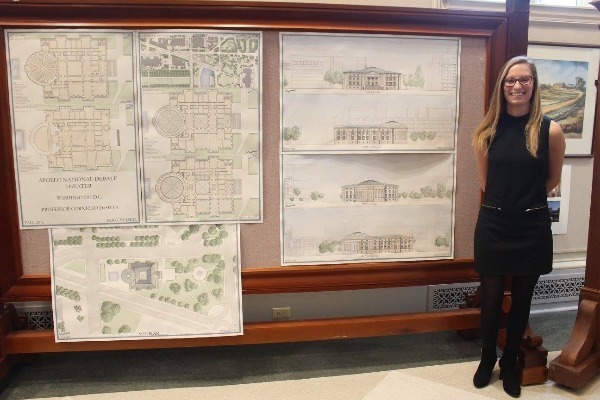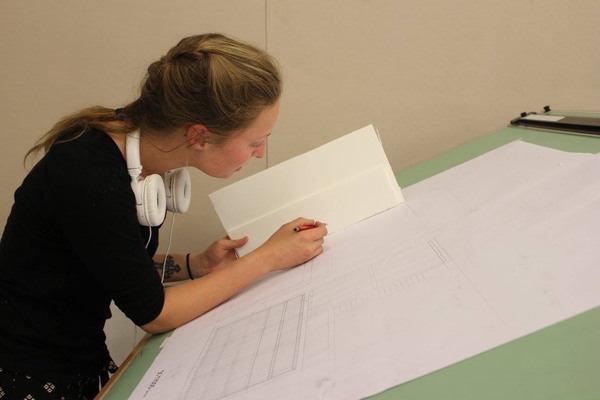Green Roofs on A Collegiate Gothic Campus
- Student
- Paige Russell
- College(s)
- School of Architecture
- Faculty Advisor
- John Mellor
- Class Year
- 2018

Our built environment accounts for 39% of the United States energy consumption. While this figure is staggering, it also means that the built environment is an area where improvements could have a big impact in a positive way on the environment. Living roofs (also known as “Green” roofs or “Eco” roofs) appeal to the triple bottom line of sustainability, or social sustainability, economic sustainability, and environmental sustainability. Roofs as spaces usually go unused. There is no other surface that has such little competition for its use and which at the same time is so underutilized. Since every building needs to have a roof, considering a living roof for university buildings is a potential way to move towards a more sustainable campus.
Taking a closer look at both the history of the living roof and the typical components seen on collegiate gothic buildings yields innovative ways that living roofs could be implemented onto primarily collegiate gothic campuses. One of these ways could be to incorporate flat living roofs on the flat roofed areas of collegiate gothic architecture. For example, at the University of Notre Dame living roofs could be added above the chapels on Farley Hall, Breen Philips Hall, and Dillon Hall, all of which would be characterized as collegiate gothic buildings. The parapet walls and crenellation would provide a nice guard rail if the living roof were accessible to the public. This could create a nice elevated garden and could potentially provide unique views of the campus and a unique characteristic of the building. The view of the roof itself would also be improved for the rooms currently looking down on these chapels.

Another way to incorporate living roofs onto collegiate gothic campuses is to look further back to history to the sod houses, burdei, gamme, earthen homes, and sod log cabins and to incorporate, as those homes did, a living roof on one of the many sloped gabled roofs seen in collegiate gothic architecture. Many ancient cultures celebrated the idea of roof gardens and landscapes. If the ancient cultures thought roof gardens worth celebrating perhaps we should be taking roof gardens more seriously and try to implement them more thoroughly and celebrate them as an important part of the roof structure rather than just hide them away as is so often seen on today’s flat roofed living roofs.
Living roofs can create learning opportunities, reduce energy costs of buildings, increase the lifespan of the building, and provide green spaces that improve the overall quality of life of the area. Living roofs can have a positive effect locally, but by extension their cumulative impact can be global. In a constant battle to fight carbon emissions and reduce the impact that our built environment can have on our natural environment, it is essential that we try to do anything we can to make our buildings more sustainable. Living roofs are an economic, environmental, and socially responsible option so we need to be more aggressive when it comes to implementing them on buildings. Living roofs have a place on more than just inaccessible flat roofs, and they should be considered a viable option on all campuses across the United States.